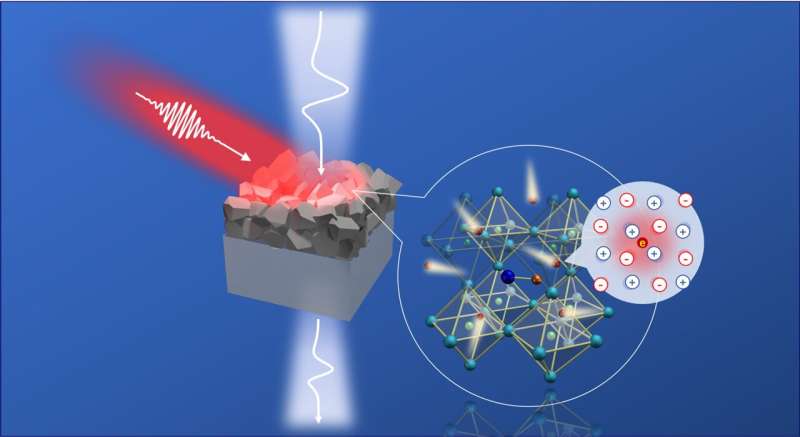Photoinduced large polaron transport and dynamics in organic-inorganic hybrid lead halide perovskite

Organic-inorganic hybrid metal halide perovskites (MHPs) have attracted tremendous attention for optoelectronic applications. For example, cost-effective solar cells, solid-state lighting, memristors, and ultrafast spin switches in spintronics have recently been designed using MHPs. Despite the promise of the material, many questions remain regarding the nature and mobility of charge carriers in MHPs, which require further understanding.
Researchers from the University of Shanghai for Science and Technology, in collaboration with Qingdao institute of bioenergy and bioprocess technology, Shanghai University, Shanghai Institute of Technical Physics, Shanghai Jiao Tong University, and Lomonosov Moscow State University, now report photoinduced large polaron transport and dynamics in organic-inorganic hybrid lead halide perovskite with terahertz probes.
The researchers experimentally identify the photocarriers-optical phonon coupling in CH3NH3PbI3 (MAPbI3) polycrystalline grains, by using optical-pump and terahertz-electromagnetic probe spectroscopy. The photoinduced charge carrier, together with the surrounding lattice distortion over several lattice constants, forms a quasi-particle—a polaron. Using the Drude-Smith-Lorentz model along with the Frӧhlich-type electron-phonon coupling, the researchers determine the effective mass and scattering parameters of photogenerated polaronic carriers. According to the polaron mass enhancement, the polycrystalline nature of the material, and the presence of defects, the large polaron mobility is calculated on the order of ~80 cm2V−1s−1.
Furthermore, the researchers reveal that the formation of large polarons in MAPbI3 protects the charge carriers from scattering with polycrystalline grain boundaries or defects and explains the long lifetime of photoconductivity. The findings provide insights into the polaronic nature of charge carriers in MAPbI3 materials, which is relevant for both fundamental researches and device applications. The results are published in the journal Light: Science & Applications.
More information: Zuanming Jin et al, Photoinduced large polaron transport and dynamics in organic–inorganic hybrid lead halide perovskite with terahertz probes, Light: Science & Applications (2022). DOI: 10.1038/s41377-022-00872-y
Journal information: Light: Science & Applications
Provided by Chinese Academy of Sciences


















